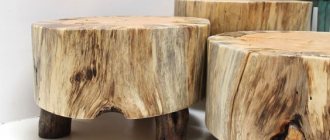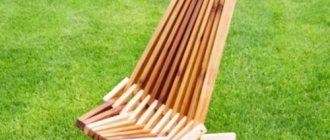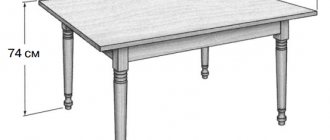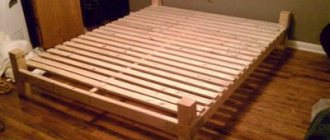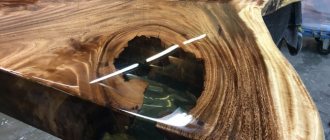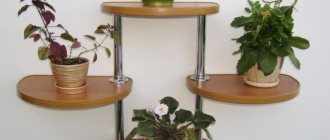Renovating a kitchen in a residential building is associated with inconvenience and financial expenses. It is unlikely that you will be able to avoid inconveniences, but you can try to save money if you have the desire, tools and skills. Not everyone can make kitchen facades with their own hands, just as professionals do in a workshop. But if your priority is budget and not necessarily luxurious design, you can do everything to your taste and without extra investments.
Types of wooden furniture facades
When making a facade for furniture with your own hands, you need to take into account several aspects:
- the door must be an integral part of the furniture, open and close normally;
- match the style of a closet, bedside table, or any object;
- high-quality products can be quite expensive (considering that they are handmade);
- the craft should be easy to maintain, cleaning should not be a difficult task.
You can make furniture facades with your own hands, using affordable tools.
Any carpenter has his own preference in the production of facades. There are several most popular varieties of products that have their own unique characteristics.
MDF facade
Boards made from wood (fibre) shavings are MDF. The composition also includes: lignin, paraffin, which are safe substances that do not affect human health. Plates are environmentally friendly raw materials.
Product advantage:
- moisture resistance;
- sufficient density for the facade;
- easy to use and work (can be cultivated with a milling cutter);
- plastic (you can give relief to an object).
MDF is a modified analogue of fibreboard (fibreboard).
MDF is the basic form, but different materials can be used for coating:
- PVC film). Sometimes people immediately choose slabs with film elements. This design resembles objects made of solid or treated wood. PVC engraving is very diverse: matte, glossy options, illustrations, large paintings, etc.
- Enameling or painting. A popular way to decorate the front part. The color range of shades is quite large. If you wish, you can make a creative image with paints. A general pattern of the sea coast on cabinets, bedside tables in the bedroom or kitchen, a collage of beautiful sakura and other plants.
- Plastic. May have a glossy or matte structure. Quite often can be seen in modern style solutions.
- Veneer (thin sheets). The designs are popular for decorating kitchens. The ideal, and most importantly popular, option is imitation of natural wood. Imagine a striking hazel or exotic wood in your kitchen. Visually, it’s bright and pleasing to the eye!
MDF is comparable in strength to solid wood, but much cheaper.
Note! MDF in facade elements can be used in any room: kitchens, bedrooms, personal offices, children's rooms, etc. Designers love to use the material in a modern style, futuristic genre.
From chipboard
Chipboard is chipboard. The structure of the material does not allow the use of milling. Such objects are always smooth and clear. The front part of these facades can be connected with plastic or aluminum cladding. Most often, laminated chipboards are used for such structures. The range of products is huge: original colors, stylization.
For facades, laminated chipboard is used, both sides of which are covered with durable decorative film.
For the kitchen, it is better to use chipboard with a moisture-absorbing structure. A similar option is suitable for the bathroom.
Additional Information. Chipboard is a budget but bright modification. Can be used for any style projects.
Made from solid wood
Making furniture from wood is an art. The most environmentally friendly material. Craftsmen most often focus on the following breeds:
- birch;
- oak;
- pine;
- beech;
- some craftsmen order “overseas” samples: mahogany, lemon wood, rosewood.
To work with this material, it must first be dried. Then the array is processed by various means. Special liquids protect wood from harmful bacteria and fungi. They also help make the raw material resistant to temperature changes or indoor humidity.
The most expensive option available among modern furniture.
The array is suitable for milling. Engravings and original images make these products the best for design developments.
When the sample is ready, it must be treated with varnish or paint, other special tinting agents, the creation of decorative coatings, and aging of objects.
There are several types of solid wood: inlaid type (from picturesque elements), veneered construction.
Important. Products are often used in Classical and Baroque styles. Country and Eco ensembles also cannot do without a magnificent array.
Features of the room
The kitchen area is endowed with special functionality; it is used most often, and the decoration and furniture in it are subject to the most intense loads. Therefore, special requirements are placed on furnishings.
When deciding to make your own kitchen set, you will need to consider the following:
- Typically, the kitchen area is not too large in size, so special attention will need to be paid to the rational organization of the work area.
- All surfaces in the kitchen are exposed to moisture and temperature changes - this should be taken into account when choosing the type of wood and the method of processing it.
- The material of the kitchen set must be resistant to wear and mechanical stress.
Wood can be painted - this allows you to protect it from moisture and dirt, make it easier to maintain and choose the desired color scheme
What tools will you need to make a wooden facade with your own hands?
In order to make a furniture facade, you need to have the appropriate tools:
- materials: wood, board, plywood, plastic, glass, MDF, chipboard and other raw materials (it all depends on the design layout);
- tape measure, ruler, square, pencil;
- electric jigsaw;
- different screwdrivers;
- screwdriver, drill;
- glue for carpentry needs;
- a set of brushes;
- clamps;
- spray gun;
- milling cutter, grinder, discs.
Anyone can make the desired sample, you just need to listen to the working recommendations.
Types of fasteners
Modern fasteners that are used when assembling furniture ensure the strength and durability of the structure, as well as its aesthetic appearance, since parts are fixed in a hidden way whenever possible, and those fasteners that remain outside are masked using special plastic linings to match the furniture .
Table 3. Types of fasteners
| Name of fastening element | Description |
Dowel | Dowels made of wood are used for preliminary fixation of two parts. After this, the structure is fastened with hardware. |
Furniture corner | Serves for fixing parts located at an angle of 90 degrees. This method is popular, but somewhat outdated and has its drawbacks - the element is not hidden, looks bulky and becomes loose over time. Corners come in plastic and metal. |
Confirmat | Modern furniture in most cases is assembled using confirmats - furniture screws, the threads of which, compared to conventional self-tapping screws, are larger, which ensures better fixation in the solid slab. After the screw is screwed in, the visible metal part is masked using a plastic plug to match the furniture. |
Eccentric coupler | Hidden fasteners used in the assembly of modern cabinet furniture from laminated chipboard. The holes for it are made in the factory using a Forstner drill. Considering that the thickness of the slab is 16 mm, and 12 mm must be selected for fasteners, the drilling accuracy must be ideal. |
Pinch bolt | Used to tighten two parts together. For example, bed bases and headboards. |
Step-by-step manufacturing guide
To make furniture facades with your own hands, you need to follow the step-by-step universal instructions:
- Development of drawings. Preparation of material base.
- We make a frame from wood. It requires a rail. It, in turn, is divided into 4 parts. Grooves are made in the end part of each of the four parts.
- Preparing the insert for the frame. A groove is made from the inner base for insertion.
- Sanding of all elements. It is better to use a grinder with a sanding disc, but you can get by with sandpaper.
- Object assembly. At this stage it is better to take measurements again. You must make sure that the dimensions are correct and correspond to the declared values. For gluing, you need to choose professional glue and strictly follow the instructions for gluing objects. You can tighten the façade elements with clamps.
- Painting (varnishing). Before work, the surface must be cleaned of dirt, degreased, and primed. You can quickly paint using a pneumatic spray gun; if it is not possible to use this equipment, you can limit yourself to brushes.
- Installation of door hinges.
Most often, valuable hard wood species that are resistant to variable humidity are used: oak, ash, maple, walnut, mahogany, acacia.
Recommendations may vary for different types of products.
Instructions for the manufacture of solid facades
Such structures are made without joints from a continuous cut, and are often painted. Then comes the surface finishing.
Several advantages of such structures can be emphasized:
- resistance to moisture, temperature changes;
- reliability;
- durability;
- environmental friendliness;
- aesthetics.
Classic wooden facades look original in any interior, creating an atmosphere of warmth and comfort.
Making solid doors is similar to the universal instructions:
- Preparatory stage: measurements, purchase of materials, tools.
- Working phase: preparation of individual parts, assembly. grinding.
- Final stage: painting or varnishing, fittings are attached.
Solid doors weigh quite a lot, the products are quite large, and the price is also not cheap.
The service life (at least 30 years) depends on the material used, the strength of the coating and operating conditions.
How to make a paneled facade
These doors are an assembly: wood, plywood insert or veneer (there can be many variations).
Sometimes doors are made without filling, and after painting, a panel, glass or grille is inserted for the facade.
Detailed instructions for the production of paneled facades:
- Project calculations. A tape measure will help you measure the openings. Here you need to remember that the doors themselves should be several millimeters smaller (usually three mm.)
- Raw materials. Suitable for work: solid wood, MDF, chipboard, aluminum, glass, etc.
- Marking. Schematic notes on samples.
- Production of individual parts. Door parts are cut out in accordance with the drawings.
- Grinding of elements.
- Working with paneled grooves (cutting).
- Openings are made for further assembly.
- Creation of a complete structure. Use of pecking agents.
- Surface drying.
- Cleaning with sandpaper (grinder).
- Primer.
- Finishing. There is an opportunity to show creative initiative and create a decorative masterpiece. Door inserts, photo collages, mosaics, simple painting.
Paneled structures have the biggest advantage - affordable cost.
You can additionally decorate with decorative moldings, lining, and carved elements.
Patience and precision are qualities that will help beginning craftsmen create works of art.
Using self-adhesive film
A quick and cheap method to radically change the look of your headset. The range of films is huge, so you can realize any design ideas.
Tip: choose quality materials. They will cost more, but a thick or textured film will lie smoother, and small scratches under it do not need to be repaired: they will be invisible.
Work algorithm:
- We unscrew the fittings from the facades, clean and degrease the surface for better adhesion.
- On the back side of the film there is a mesh with a cell size of 1 cm. Using it, we transfer the shape and dimensions of the surface to be pasted onto the material. It is recommended to leave allowances of 1–2 cm around the entire perimeter.
- Using sharp scissors, carefully cut out the measured fragment.
- We paste the film from top to bottom, gradually removing the protective coating and smoothing it with a plastic spatula or cloth from the center to the edges.
Important! Try to avoid the formation of air bubbles under the film. If they do appear, there are two ways to remove them. The first is to carefully peel off the film before the glue sets and re-stick it. The second is to pierce the bubbles with a needle and then smooth them out with a spatula.
When applying the sticker, pay special attention to the edges: in these places, most often the film begins to lift and peel off.
Installation of facades
Even at the manufacturing stage, certain installation procedures are carried out:
- marking areas with fittings;
- openings for parts;
- loops are attached;
- now the facade is placed in the doorway;
- adjustment of fittings.
You can transform a room at relatively low cost.
Gallery
Did you like the article? Subscribe to our Yandex.Zen channel
Great article 0
Recommendations and tips for production
Anyone faces difficulties with woodworking, especially at the initial stage. There are several recommendations that will help beginners:
- Product diagrams can be found on the Internet at specialized sites. Start easy projects first, then make the tasks more difficult.
- Explore theoretical information on this issue: articles, training videos.
- Buy carpentry tools. It's good to have equipment always at hand.
- The simplest methods of decoration are self-adhesive film. Using stain. It highlights the natural structure of the tree. It looks original and elegant.
Furniture made by yourself will suit your tastes and needs.
Making a facade with your own hands is just the beginning in woodworking. At first it is always not easy for a person. In the future everything will turn out better.
Assembly
Cabinet assembly photo
After making all the components and edging, you can proceed directly to assembling the kitchen furniture. First of all, the holes intended for fastening are marked and drilled - here it is very important not to drill holes through, otherwise the panel will be damaged.
The structure is assembled according to the principle of assembling a box, when vertical elements are attached to the horizontals. After assembling the cabinet, it is advisable to immediately insert all internal elements to avoid confusion. When installing roller guides, be sure to use a level - otherwise the drawer will not fall into place.
The legs are attached to the already assembled cabinet upside down. After completing all the above operations, you can begin installing the front elements of the facade. All doors except corner doors are installed in the open position at an angle of 95 degrees. The final step is screwing the handles onto the doors.
